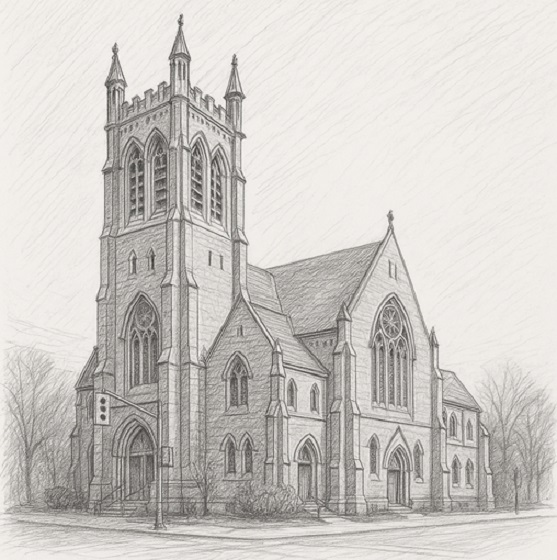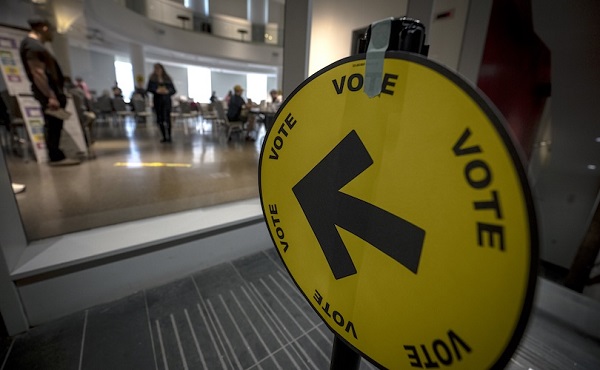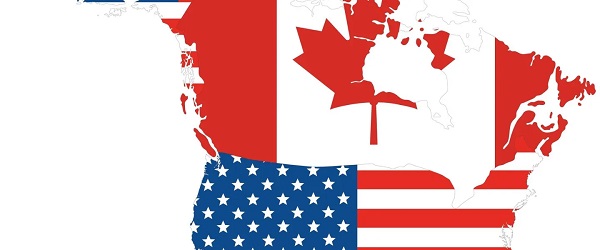Opinion
Sports will bankrupt this city unless City Hall becomes more pro-active or take an activist role.


What is it about sports that needs bail outs and subsidies. The winter games will be costing us for years yet, with million-dollar payments to the college for the ice rink alone. The Westerner needed emergency bail outs to stay afloat. The CFR agreement needed a rewrite. Now the Riverbend Golf Course?
Recently I read in the news about conflicting goals at Riverbend Golf Course and the surrounding facilities like the trails and the waterpark.
The golf course wants a bigger club house, more bathrooms and parking for example. Then I hear that they have not been paying their debt from the last expansion in 2004, 18 years ago. As I understand it, they have only paid $125,000 of a $1.7 million dollar loan, about 7%.
The city has had council representation and citizen representation on the board, and yet this happens. The Westerner Grounds nearly bankrupted itself recently under similar circumstances. The city’s representative never questioned the status quo, just quietly accepted it.
Would the city accept me not paying my property taxes five out of every 6 years because I want to expand and add more bathrooms to my house?
My children and grandchildren went and are going to school, and we fundraise, sell things, working bingos, casinos, collect bottles and hold raffles. The hospitals where they were born fundraise, the SPCA fund raise.
When they entered sports like hockey, soccer, BMX, baseball, football etc. they hold raffles, have garage sales, bottle drives, sold coupons, meat, ice salt etc. to raise money.
Can the golf club follow suit to get out of being a drain on the public purse, while keeping their big dreams?
Our great city needs to look at their return on investments sometime. Instead of bail outs at the last minute every time. They need to be pro-active and not just reactive.
The city owns the land they could lease it to a private operator, perhaps make a return or at least reduce the costs to the taxpayers.
Perhaps, someone could just question things? Perhaps, the city could look at being more of an activist shareholder or appoint more activist representation?
Is it just easier to write cheques? I think the golf course will see this debt forgiven or rolled into a bigger loan for another expansion. After all, it is just the taxpayers’ money. Just saying.
Garfield Marks
National
Politically Connected Canadian Weed Sellers Push Back in B.C. Court, Seek Distance from Convicted Heroin Trafficker

Case sprawls from Pakistan’s chemical-precursor labs to Vancouver’s cannabis fields and law offices.
A high-stakes North American legal battle—centering on a politically connected Sikh-Canadian businessman at the collision point of Canada’s regulated cannabis sector and what U.S. authorities call a “multiyear, multinational attack” on American markets—and two estranged Vancouver brothers, one a convicted heroin trafficker and the other a cannabis cultivator alleging he was cut out of a Health Canada–licensed venture—has taken a turn in B.C. Supreme Court.
In one action, Emerald Health Sciences and related parties—including former British Columbia physician Avtar Singh Dhillon—have denied allegations by Krishansarup “Kris” Kallu, an estranged relative who says the company was structured to enrich insiders later charged by the U.S. government and to conceal key investors with deep narcotics ties that extend to chemical-precursor labs in Pakistan’s northern mountains—including his brother, Yadvinder “Yad” Kallu.
Dhillon—a British Columbia–educated physician and Sikh community leader now based in California—has long displayed deep political proximity in Canada; among the images circulating online is a photo of his niece with Prime Minister Justin Trudeau.
As Emerald Health stepped back from Dr. Dhillon—later drawn into an SEC case describing his role, along with West Vancouver lawyer Fred Sharp, in a one-billion-dollar stock-fraud network as a “multiyear, multinational attack” on American markets—his former Emerald partners filed a civil indemnity claim in September 2025 to create legal distance from Yadvinder Kallu.
In plain terms, the former executives deny the allegations against Emerald and argue that, if anything improper occurred—which they do not admit—legal responsibility must rest with Yadvinder Kallu alone.
Kris Kallu’s suit centers on the claim that his cousin Avtar Dhillon, Emerald Health Sciences, and Fred Sharp sit at the core of the network targeted by the United States government. He alleges that Sharp and Avtar Dhillon “are the true, direct or indirect controllers of Emerald Health Sciences,” and that “Sharp and [Avtar Dhillon] have been close business associates for many years.”
Kallu’s filings allege that individuals facing fraud charges in United States proceedings were among Emerald Health’s early investors.
They also state that Emerald Health Sciences had more than 200 shareholders on a confidential register maintained in Vancouver by the Canadian law firm Bennett Jones. The Bureau has previously reported on the firm’s ties to Liberal Party figures, and that former British Columbia premier Christy Clark has served as a senior adviser in the firm’s Vancouver office.
The Bureau’s reporting also included reviewing thousands of North American court filings and mapping financial networks tied to that legal share register—networks that span the Western Hemisphere and, through Yad Kallu’s historic narcotics activity, intersect with politically consequential narco-trafficking corridors in northern India and Pakistan.
Kris Kallu’s allegations are blunt: they suggest Emerald Health grew from a poisoned root—an effort to work around his brother Yad’s transnational trafficking history—while a polished corporate vehicle, including the Bennett Jones confidential share register, was built. He alleges that register ultimately benefited suspects tied to the Fred Sharp network.
In a revealing September 2021 email to another Dhillon family member—referring to news of U.S. government charges against the Fred Sharp network—Kallu wrote, according to his affidavit: “I find it very alarming as the key players that are being charged with fraud, money laundering, etc. are also invested in Emerald Health Sciences. I am curious how these investors were provided the opportunity to invest, given this is a private cannabis company and all investors were handpicked.”
According to Dhillon’s testimony in Boston as a cooperating witness, Sharp’s group would merge private companies run by hidden Vancouver investors into publicly traded companies, hire writers to fraudulently tout the companies in order to pump up prices, then sell shares to everyday investors—who were left holding deflated assets. Afterward, the conspirators laundered their proceeds. Key players got cash payments, part of a sprawling stock-fraud scheme allegedly tied to cannabis and biotech firms, shell entities, and a network of shadowy Western Hemisphere control groups.
During his testimony, Dhillon described one Vancouver exchange: “Once those shares were sold, I was in communication with (one of the Fred Sharp actors) about receiving some of the funds, and (the actor) offered and said, ‘Would you like to receive them in cash?’ And I said, ‘Certainly.’” Elaborating further, he said, “(The actor) personally delivered cash to me—usually at a restaurant.” When asked why he preferred cash, Dhillon was candid: “To hide it.”
Tracking further back in the B.C. Supreme Court record, Kris Kallu’s filings reach to Health Canada’s medical-marijuana program to explain how the business took root.
“In 2010, I completed an application form to obtain a designated growing licence,” his affidavit states, describing an effort to gain expertise ahead of regulatory changes. Because his brother Yad carried a trafficking conviction, Kris says the family devised a workaround: “As part of the application process, you had to pass a criminal background check. Yad had a criminal record for drug trafficking, so it was agreed that I would formally apply to become a designated grower for a patient who had a license for 99 plants.”
By 2013, he says, both Yad and their mother held sizeable medical-marijuana licences. He alleges that when Emerald Health was formed, he was told to route share-purchase funds through his mother’s bank account and later learned that some shares were allocated to David Nair, a co-defendant in Yad’s earlier criminal case. The criminal history cited by Kris Kallu relates to Yad Kallu’s involvement in a late-1990s joint DEA–RCMP probe ending with United States federal sentences after a California heroin deal.
B.C. Supreme Court findings describe a DEA operation that implicated Yad Kallu and Vancouver underworld figure Ranjit Singh Cheema, who was extradited to the United States for allegedly planning to import 200 kilograms of heroin and 4,000 kilograms of hashish from Pakistan. Cheema’s Canadian faction reportedly negotiated with Colombian cartels, bartering heroin for 800 kilograms of cocaine. Central to the probe was Mohammed Yusuf Khan, a former Pakistani military officer turned DEA asset, who facilitated the heroin transactions for Cheema’s network while working with RCMP liaisons.
The sting had deep U.S. intelligence roots.
According to a March 20, 1997 debrief by DEA Islamabad personnel—cited in Canadian court records—Mohammed Yusuf Khan told agents he had been approached by Mohamed Shafiq, a retired Pakistani army major and owner of Karam Associates, a chemical importer in Lahore. Khan said Shafiq “routinely diverts acetic anhydride to traffickers” operating in Pakistan’s Northwest Frontier Province—an essential precursor for heroin production—and that the pair were arranging a shipment of approximately 200 kilograms of Southwest Asia white heroin and up to four tons of hashish destined for North America.
Khan reported that Shafiq had already contacted a lab operator in northern Pakistan to stage the heroin for export. Initially, Shafiq “desired that the shipment be sent to Vancouver,” but Khan—who was also in contact with RCMP liaisons and aware of recent Canadian court decisions restricting controlled deliveries—refused to facilitate a Canadian entry. The plan shifted to Los Angeles, where Shafiq “had people in place who could take custody of the load and arrange its distribution.”
After U.S. visas were denied to both Shafiq and Khan, Khan offered to travel to Canada on his own—he held a multiple-entry Canadian visa—to meet “affiliated Canadians” and identify the U.S.-side recipients.
Meanwhile, in B.C. court filings, Emerald Health Sciences denies that Emerald was a conduit for undisclosed payments or a vehicle to hide criminal investors and asks the court to dismiss the Kris Kallu suit.
In a separate civil action dated September 11, 2025, five former Emerald Health Sciences figures closely linked to Avtar Dhillon seek protection from Yad Kallu.
Their claim cites the ongoing lawsuit brought by Kris Kallu and seeks indemnity from Yad, asserting that if any losses occurred, they were caused solely by Yad’s acts—not by the other Emerald parties.
But a narrow focus on Canadian court filings and B.C. hearings can distract from the underlying matter—and from the thematic link between Middle Eastern chemical labs and poppy fields and the fertile farmlands of Richmond, B.C., where narcotics have helped fuel a booming export market in Western Canada.
Industrial-scale grow-operation facilities linked to Emerald Health were the focus of Delta Police investigations in 2020, civil-forfeiture records show.
On October 28, 2020, police executed search warrants at multiple Richmond properties; they later described “Project Big Smoke” as the cannabis-production component and “Project Rolling Thunder” as a wider drug-trafficking probe launched in November 2020. Investigators concluded the output from these sites far exceeded the limits of Health Canada licences that Emerald promoted in 2018 through investor materials featuring Members of Parliament Carla Qualtrough and John Aldag, Richmond councillor Alexa Loo and Yad Kallu. Police estimated the facilities could produce roughly 18 million dollars’ worth of cannabis annually.
While cannabis was the primary focus, Delta Police’s “Rolling Thunder” raids—targeting a biker network linked to Emerald-branded marijuana—also uncovered hundreds of individually packaged doses of fentanyl, methamphetamine and crack cocaine, along with approximately one kilogram of powdered cocaine, according to filings in the B.C. Director of Civil Forfeiture’s ongoing case against Emerald-linked properties.
Meanwhile, in his 2023 appearance before a United States jury, Dhillon acknowledged that he agreed to testify against a number of his alleged conspirators, including Sharp, partly to mitigate his sentence. Dhillon testified that he personally earned between six and seven million dollars from these schemes, with proceeds funneled through various means—including offshore accounts in Singapore and Switzerland, cash deliveries, and payments routed through “designees.”
Dhillon’s testimony also illuminated Fred Sharp’s pivotal role in orchestrating these schemes, alleging Sharp established layers of offshore structures to hide beneficial ownership and exploited small-cap and emerging-market companies, including cannabis and biotech firms.
The Bureau is a reader-supported publication.
To receive new posts and support my work, consider becoming a free or paid subscriber.
Courageous Discourse
No Exit Wound – EITHER there was a very public “miracle” OR Charlie Kirk’s murder is not as it appears

By John Leake
Turning Point Spokesman: “No Exit Wound a Miracle”
Charlie Kirk Show producer Andrew Kolvet repeats extremely dubious claim purportedly made by “the surgeon who operated on Kirk.”
Monday Blaze Media (relatable with Allie Beth Stuckey) reported the following:
Turning Point USA spokesman and executive producer of the “Charlie Kirk Show” Andrew Kolvet revealed new details about the shooting that even doctors are calling a miracle. According to Kolvet, the surgeon who operated on Kirk claimed that the high-velocity bullet was powerful enough to kill multiple large animals — and “should have gone through” his body. But for some reason, Kirk’s body was able to stop it.
“I want to address some of the discussion about the lack of an exit wound with Charlie,” Kolvet wrote in a post on X.
“The fact that there wasn’t an exit wound is probably another miracle, and I want people to know,” Kolvet continued, explaining that he had spoken with the surgeon who worked on Charlie in the hospital.
“He said the bullet ‘absolutely should have gone through, which is very very normal for a high powered, high velocity round. I’ve seen wounds from this caliber many times and they always just go through everything. This would have taken a moose or two down, an elk, etc,’” he recalled.
“But it didn’t go through. Charlie’s body stopped it,” he added.
When he mentioned to the doctor that there were “dozens of staff, students, and special guests standing directly behind Charlie” when he was shot, the doctor reportedly replied, “It was an absolute miracle that someone else didn’t get killed.”
“His bone was so healthy and the density was so so impressive that he’s like the man of steel,” Kolvet recalls the doctor saying.
This is not a credible statement, and it raises a number of concerns.
It strikes me as very perplexing that a “surgeon operated on Kirk,” because in the video of the shooting, Charlie reacted with a decorticate posture—that is, an abnormal body posture characterized by flexion of the upper limbs—caused by severe trauma to the central nervous system. This indicates that the bullet either directly struck his cervical spinal cord, or the shock wave of the supersonic bullet passing near his spinal cord traumatized it.
A 150-grain, .30-06 bullet’s energy at 150 yards from the muzzle varies by ammunition, but a common hunting cartridge has an estimated value of approximately 1,800-2,000 foot-pounds (with the bullet traveling at about 2500 feet per second). In other words, the .30 caliber (.30 inch diameter) metal projectile struck his neck with sufficient kinetic energy to move a 2,000 pound mass a linear distance of one foot.
If the bullet that struck Charlie’s cervical spinal cord was a .30-06 fired from 150 yards away, it would have:
1). Severed his spinal cord, killing him instantly.
2). Passed through his neck.
Note that the cervical vertebrae are supported by strong muscles and have high compressive strength, but are far too delicate to stop a .30-06 bullet traveling at 2,500 feet per second.
If ALL of the kinetic energy of the bullet was absorbed by Charlie’s neck, it would have done spectacular trauma to his neck, as distinct from producing the clean bullet hole visible in the video footage that ruptured his Carotid artery.
Though I appreciate that some may find a supernatural explanation to be consoling, it seems to me that the investigation should not rest on the this explanation.
As I wrote a few weeks ago: If I were investigating the murder, I would consider the hypothesis that Charlie was shot with a weapon equipped with a suppressor and loaded with a subsonic cartridge to further reduce the sound. I have seen footage of someone firing a rifle with this setup, and the shot was amazingly quiet. The effective range of such a weapon is about 100 yards or less, and the shooter must be very skilled.
However, such a setup could fire a subsonic projectile that would penetrate a human neck without passing through it. In this scenario, the actual assassin (firing the suppressed rifle) hypothetically coordinated the timing of his shot with someone else firing a normal (supersonic and loud) rifle cartridge into the air at the same time to create a distraction or red herring.
In a functioning society in which the people trust their authorities—including their medical examiners—it would be easy to discover what happened and to disclose at least a preliminary report that would satisfy most reasonable people. The trouble our Republic is facing now is that so many of us no longer trust our federal and state authorities to tell us the truth.
For example, we have strong grounds for suspecting that medical examiners are not diligently investigating (with the proper analytic methods) unexpected, fatal cardiac arrests in young people to determine if they were caused by vaccine-induced myocarditis.
Subscribe to FOCAL POINTS (Courageous Discourse).
For the full experience, upgrade your subscription.
-

 Alberta2 days ago
Alberta2 days agoClick here to help choose Alberta’s new licence plate design
-

 National2 days ago
National2 days agoDemocracy Watch Renews Push for Independent Prosecutor in SNC-Lavalin Case
-

 Business2 days ago
Business2 days agoOver two thirds of Canadians say Ottawa should reduce size of federal bureaucracy
-

 Alberta1 day ago
Alberta1 day agoBusting five myths about the Alberta oil sands
-

 Frontier Centre for Public Policy1 day ago
Frontier Centre for Public Policy1 day agoOttawa Should Think Twice Before Taxing Churches
-

 City of Red Deer1 day ago
City of Red Deer1 day agoPlan Ahead: Voting May Take a Little Longer This Election Day
-

 Business1 day ago
Business1 day agoUS government buys stakes in two Canadian mining companies
-

 Energy23 hours ago
Energy23 hours agoMinus Forty and the Myth of Easy Energy









